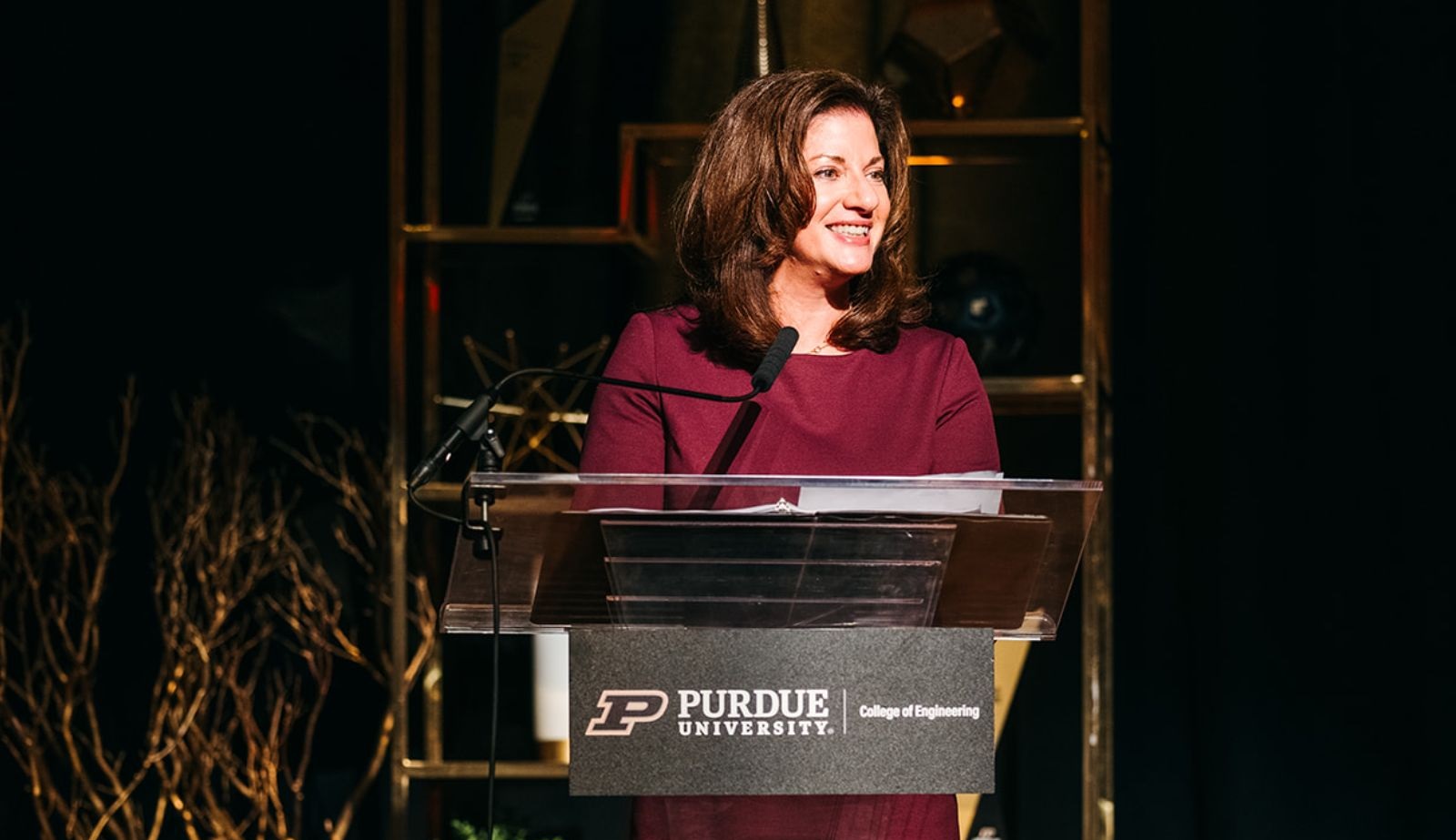The ‘steep’ learning curve of a new and complex industry has been one of Carrie Anderson’s biggest challenges as CFO of Campbell’s Soup Company, something she tackles by scheduling ‘deep dives’ with internal experts. But it helps that she has experience across a range of sectors and knows how to get up to speed. She also credits previous IR experience – and the skills of the firm’s chief IRO – in that process.

Anderson joined the firm in February 2023 as executive vice president and CFO, leading a host of departments including controllership, corporate financial planning and analysis, corporate strategy and development, tax, treasury, internal audit, investor relations, transactional services and financial systems. Reporting to the CEO, she oversees Campbell’s IT group and is a member of the operating committee, which focuses on board-level matters and the development of the strategic plan and annual operating plan.
Here, Anderson talks to IR Magazine about everything from double-digit inflation and the macro environment to onboarding analysts and the long memories of investors – as well as sharing her go-to soup and snack choices.
How would you sum up your approach to investor relations?
I have a unique appreciation of the importance of the work Rebecca Gardy, our chief investor relations officer, does. Earlier in my career, I was the director of investor relations for Delphi Automotive, now known as Aptiv, so I’ve walked in her shoes before.
IR is one of the most strategic functions in a public company: best-in-class IR can drive incredible value creation for a firm. For Campbell’s, that is about sharing our compelling investment thesis as one of the most dependable, growth-oriented, large-cap value names in food.
IR is really at the forefront of communication for the company, and it plays a key role in shaping market perception and influencing stock valuation through clear communication of the company’s value proposition, growth potential and competitive advantages.
‘IR is this perfect blend of sharing the science of the numbers and the art of storytelling.’
Carrie Anderson
It’s really important to me, as I think about my approach to IR, that I arm Rebecca with as much comprehensive understanding of the business as possible, because she is the front line as the spokesperson on the IR side. This means ensuring Rebecca has access to relevant information and resources: financial reports, market research, industry analysis and our strategic plans. I need her to be informed about the latest developments and trends that are impacting our business.
Having had that investor relations experience yourself, what characteristics do you look for in your IR team?
First, you need folks who really have a strong desire to learn about the business, the industry and the investor base. You’ve got to be curious. The second piece is being a great communicator – that is a must.
IR is this perfect blend of sharing the science of the numbers and the art of storytelling, and Rebecca is a master at this. She does a great job of crafting a compelling narrative that provides context and meaning to our financial results and market performance.
The third thing I look for is a deep understanding of financial concepts: financial acumen is essential for the investor relations team. You have to connect the dots. And you want your IR team to be able to analyze financial data, interpret trends and provide insights not only to your investor community, but also to the CEO and CFO. I value Rebecca helping me understand the way she thinks investors are going to view and interpret our results.
Of course, IR is about so much more than those three things. It’s about the ability to shape perceptions and to build relationships with investors. It’s about having that external perspective. You are continuously monitoring the market environment and providing insights on how different factors may affect the business.
How does Campbell’s management measure the success of the IR program, and what do you think the investment community appreciates about the way you work with IR?
We are always aiming for a relative fair valuation of the company, and we measure that using market-comparable metrics. The example I would share with you is the enterprise value to Ebitda ratio. That’s an important metric for us and we’re looking at how it compares with our peer companies in the space, as well as comparing it with what we see as our company’s intrinsic value.
‘When it comes to what the investor community values about our approach to IR, it’s really about consistency and transparency – we do what we say we’re going to do.’
Carrie Anderson
Then there are other more ‘traditional’ IR measures, such as the number of sell-side analysts who cover the company. We also look at investor outreach and engagement frequency metrics, monitor changes in our shareholder base and conduct periodic perception studies.
When it comes to what the investor community values about our approach to IR, it’s really about consistency and transparency – we do what we say we’re going to do – and I think that’s universal across all IR programs. It’s important to build that credibility of consistency, data transparency and communication.
Something Mark Clouse, our CEO, does a really great job of is providing insights into industry dynamics, which give a really helpful backdrop to our results. So it’s not just understanding our numbers – it’s understanding our results in the context of what’s happening with the broader industry. And this is particularly important right now as the food industry is lapping a significant period of double-digit inflation, price increases and unit-volume pressure. These macro trends are impacting all food companies, not just Campbell’s, so investors really appreciate that understanding of the broader landscape as they view our results.
What percentage of investor one-on-one meetings do you typically attend?
The math is about 25 percent to 40 percent depending on the format. Generally, I engage most when we’re providing new information to our investor community, such as after earnings releases or recent M&A announcements. For example, engaging with our covering analysts after our earnings conference call is a really important opportunity for us to nurture relationships and hear their perspectives.
I also strategically participate in calls with key shareholders in the days and weeks following the earnings release, as well as attend all sell-side investor conferences and non-deal roadshows. And Rebecca leverages both our CEO and me as she onboards new sell-side analysts. We’ve added four sell-side analysts just this past year.
What’s your favorite thing about the IR work you do?
What I like most is that you get to share the growth story with the investment community. There are not a lot of roles where you get to shape the company’s narrative. It is fulfilling to see how our communication efforts can influence perceptions of the company and drive value for our shareholders.
A great example of this is our recent acquisition of Sovos Brands, which brings a billion dollars of revenue into Campbell’s. The most well-known of the Sovos Brands is called Rao’s, which sits in an ultra-distinctive, Italian premium sauce category. So this is really an exciting time to be part of Campbell’s – and IR is right at the center, shaping the narrative for the financial community.
And your least favorite?
Investors have really long memories, so consistency of results is absolutely critical. They can be quite punitive when you have even a very small misstep in delivering your quarterly numbers. If that happens, you have to rebuild that trust all over again.
Then there’s the growth in buy-side investment decisions that are now tied to quantitative approaches. Quant investors often rely on automated algorithms or advanced quantitative models to identify patterns, trends and anomalies in the market, to take advantage of statistical arbitration. This can certainly lead to frustration and challenges on the IR side, because it can create stock volatility and exasperate stock-price movements if there is an overreaction to market news.
How do you manage that challenge?
Managing this is all about data transparency and making sure we understand what these models are leaning into, what are they leveraging, what are they looking at. It’s around algorithm-friendly communication. As we craft our press releases, for example, we think about the sentiment in that release: the words we choose and even how we organize the release. We want to make sure it’s very algorithm-friendly.
And you still want to look for engagement opportunities: these investment houses may not be relying 100 percent on quant analytics, so there is still an opportunity for active engagement with them. You want to make sure you’re using the opportunity to educate about the company and talk about the long-term value proposition, to weather any short-term volatility in the market.
As CFO, what’s been the biggest IR challenge to date?
This is not my first time as CFO, but it is my first time as CFO in the food and beverage space so my biggest IR challenge has been getting up the learning curve – which is steep. It’s a complex industry.
I have been fortunate to have worked in a number of industries, including automotive, electronics, industrial markets and medical devices, so I have this foundation in understanding complex supply-chain and manufacturing dynamics. But here I have to learn the nuances of food, including brand-management, retailer relationships, channel dynamics and the seasonality and trends of our business, to name a few things. That’s why I often schedule deep dives with our internal subject matter experts to learn the business.
‘I see myself as a business partner first, and a finance professional second’.
Carrie Anderson
My tip to other CFOs – whether they’re new in their role or not – is to really lean in to curiosity. Learn the business.
There is a phrase I use with the many junior employees I have a chance to speak with: ‘I see myself as a business partner first, and a finance professional second’. It’s a very simple statement, but it empowers me to ask all kinds of questions about the business, because I want to learn, and I want to understand the business drivers. Honestly, this is one of the most fun parts of the job – that opportunity to be able to really understand the business.
Finally, what’s your favorite Campbell’s Soup – and why?
I’ve always been a fan of Campbell’s Creamy Tomato Soup since I was a kid – it is the go-to for me. But Campbell’s is much more than just soup! About half of our revenue is actually in snacking categories. We have great brands like Goldfish crackers and Snyder’s of Hanover Pretzels – and you can’t forget about all of the great Pepperidge Farm Cookies we have. There’s a Pepperidge Farm brand called Farmhouse Thin and Crispy Cookies that have become a favorite snack of mine.







